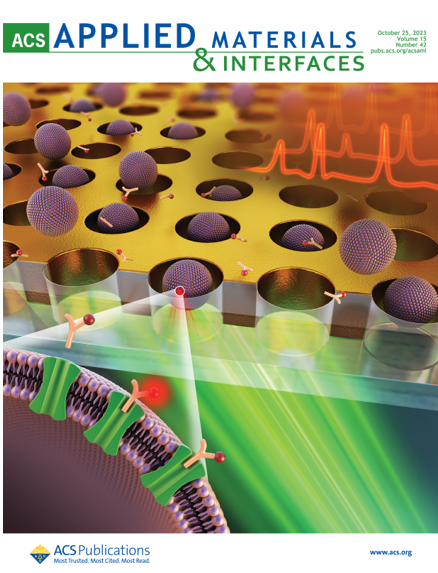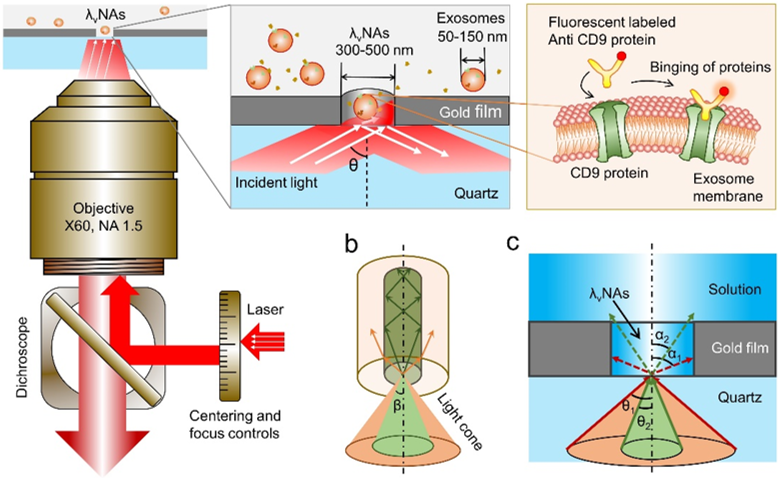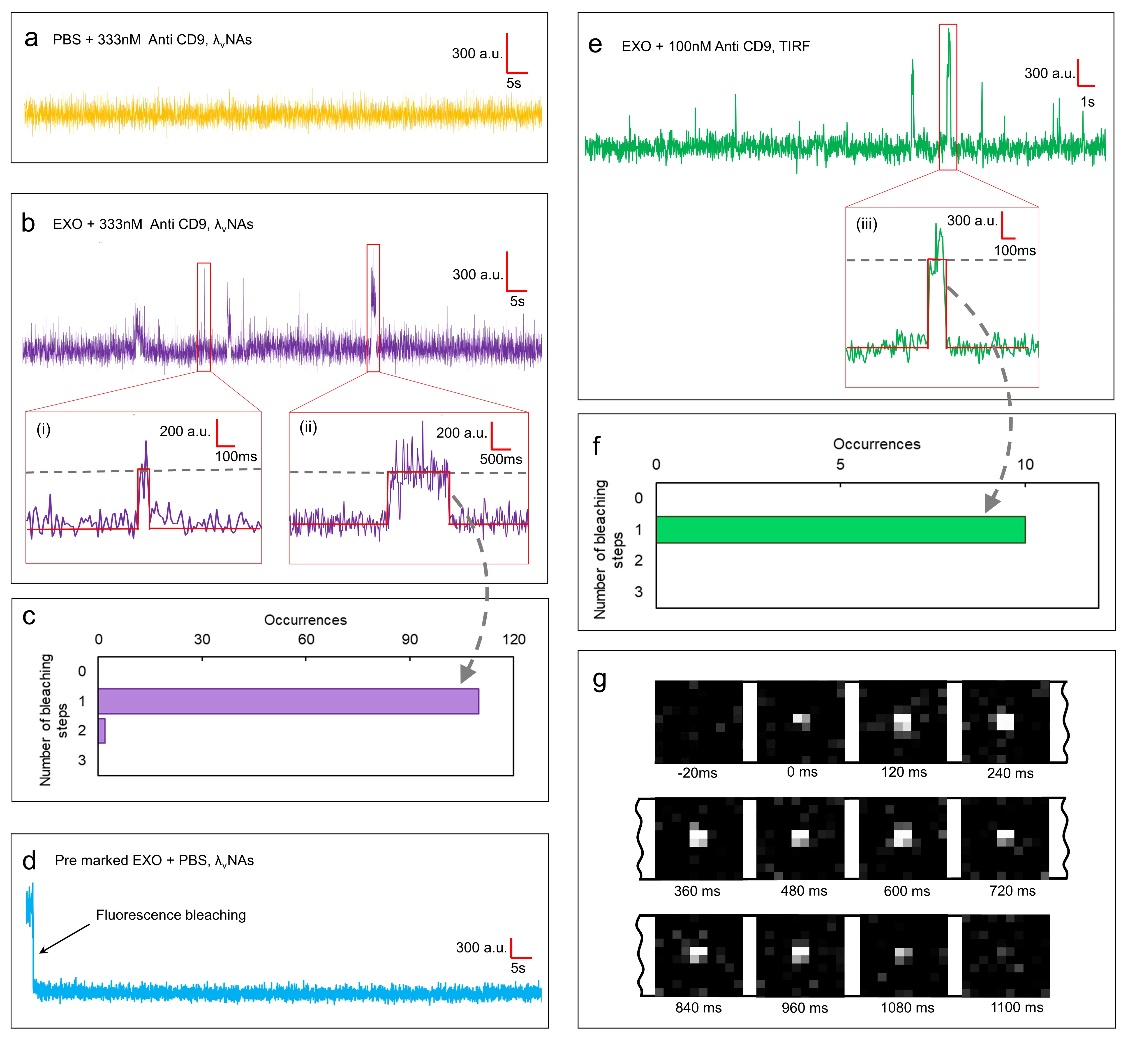Recently, a research team led by Prof. GUO Zhen and Prof. ZHOU Lianqun from the Suzhou Institute of Biomedical Engineering and Technology (SIBET) of the Chinese Academy of Sciences developed a nanocavity antenna that goes beyond zero-mode waveguides, which reveals the interaction process of single protein molecules on the surface of exosomes.
Results of their study were published in recent issue of the ACS Applied Materials & Interfaces as cover article entitled "Revealing the Binding Events of Single Proteins on Exosomes Using Nanocavity Antennas beyond Zero-Mode Waveguides".

Fig. 1 The Cover from ACS Applied Materials & Interfaces,2023, Volume 15,Number 42. (Image by ACS Applied Materials & Interfaces)
Studying single-molecule interactions on the surface of exosomes holds profound biological significance. Nevertheless, the minute size of exosomes, typically ranging from tens to hundreds of nanometers, poses a formidable challenge in detecting binding events between exosomes and nanometer-scale proteins.
Therefore, researchers devised a nanocavity antenna that transcends zero-mode waveguides, enabling more efficient excitation of single-molecule fluorescence and achieving high signal-to-noise ratios (19.5) along with commendable occupancy rates (12%-23%).
"This innovative approach overcomes the limitations of loading large volumes of biological materials into nanometer-scale cavities,” said Prof. GUO Zhen.

Fig. 2 Schematic illustration of the working principle of a nanocavity antenna beyond the zero-mode waveguide. (a) Schematic diagram of the optical detection system of the nanocavity antenna; (b) schematic diagram of the principle of traditional optical waveguides; (c) schematic diagram of the principle of nanocavity antenna. (Image by SIBET)
The team then further explored the dynamic imaging of extracellular vesicles surface protein binding events using the nanocavity antenna beyond the zero-mode waveguide.
By using this method, they measured the binding events between single transmembrane CD9 protein on the surface of extracellular vesicles and its monoclonal antibody, indicating that the detection range of single molecule events has broken through the physical size limit of the zero-mode waveguide hole.
"This method can be used to analyze the interactions between single molecules and biological materials from tens of nanometers to hundreds of nanometers, such as vesicles and apoptotic bodies,” said Prof. GUO.
The research provides a method for understanding the interactions of molecules on the surface of extracellular vesicles, which can be applied to research on the mechanism of extracellular vesicles, drug screening, tumor diagnosis and treatment.

Fig. 3 Real-time recording of fluorescence signal intensity during the binding process of single protein molecules on the surface of exosomes. (a, d) Fluorescence signal real-time recording results of the control group; (b) fluorescence signal real-time recording results of the experimental group; (c) statistical analysis of the fluorescence bleaching steps of the experimental group; (e) real-time recording results of fluorescence signals obtained by microscopic imaging methods; (f) statistical analysis of the fluorescence bleaching steps of the microscopic imaging method; (g) image of the fluorescence changing process within a single nanocavity over time. (Image by SIBET)
A postgraduate student, GAO Qingxue, at the Suzhou Institute of Biomedical Engineering and Technology, Chinese Academy of Sciences, is the first author of this article. Prof. ZHOU Lianqun and Prof. GUO Zhen are the corresponding authors of this paper. This research work was funded by national key R&D projects, National Natural Science Foundation, and other projects.
Contact
XIAO Xintong
Suzhou Institute of Biomedical Engineering and Technology, Chinese Academy of Sciences (http://www.sibet.cas.cn/)
Phone: 86-512-69588013
E-mail: xiaoxt@sibet.ac.cn